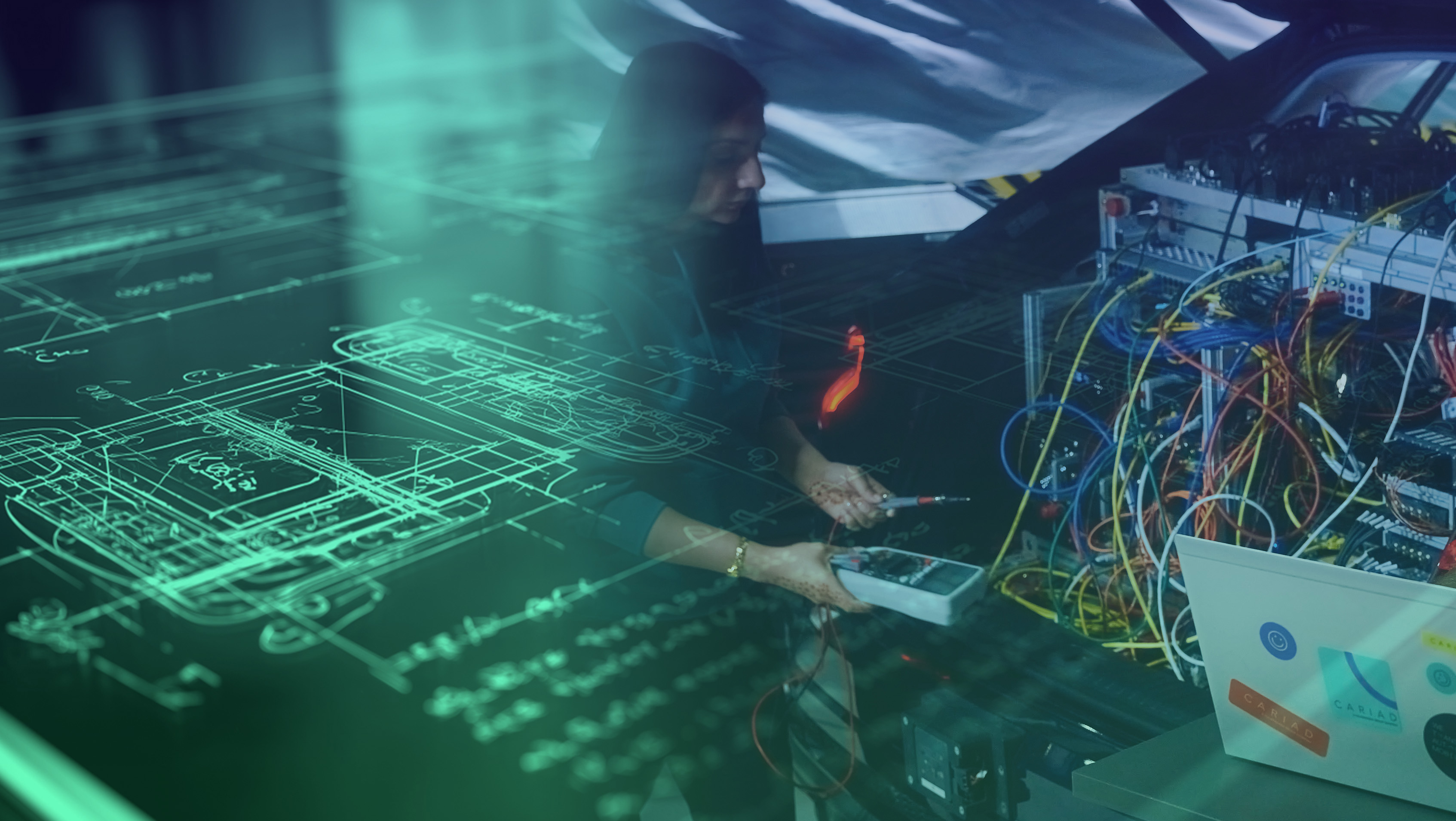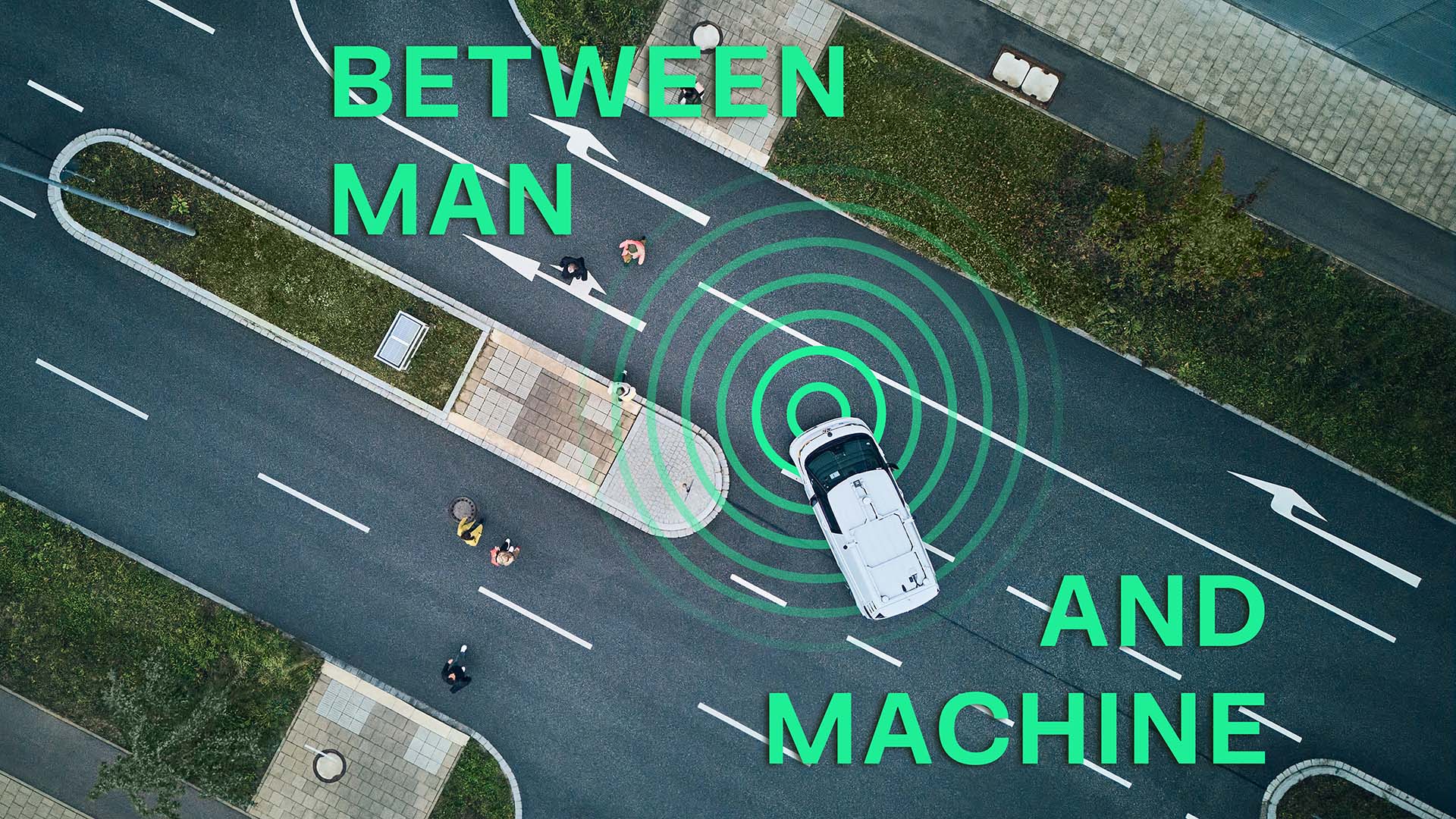A central architecture enables more comprehensive software functions
Highly automated, Level 4 driving and lightning-fast over-the-air updates: In this article, we explain how the car of the future is becoming a reality with a new unified architecture.
 Our software platform is comprised of three layers – hardware, software (including VW.OS and VW.AC) and applications.
Our software platform is comprised of three layers – hardware, software (including VW.OS and VW.AC) and applications.
Today, cars are already computers on wheels. They assist drivers with steering, braking and keeping their distance. They connect them to the internet and can automatically process payments when charging an electric vehicle.
But instead of being controlled by a central computer, all of these functions are, in a traditional electronics architecture, still run via a large number of small computers scattered throughout the vehicle. These control units are linked to sensors and actuators (such as cameras, radar, lidar and trunk openers) and designed to perform specific tasks. Often, only a single function is linked to an ECU, which in turn uses its own software for this purpose.
Over the past year, this complex architecture within the vehicle has grown – and is increasingly reaching its limits. That’s why CARIAD and Volkswagen Brands closely cooperate to develop the unified architecture of the future for the entire Volkswagen Group. Completely rethought, it serves as the basis for the software-defined vehicle. It’ll be the game changer that turns the car into a digital device and smart companion for its drivers. "The standardized architecture is the key to unlocking new vehicle functions at lightning speed in the future with an over-the-air update, and to enabling highly automated driving at Level 4 with machine learning and artificial intelligence," says Alf Pollex, who heads the development network for the Group-wide standardized software platform at CARIAD.
Controlling sensors centrally
In cars with a traditional electronics architecture, more than 100 control units and various software communicate with each other to keep infotainment, driver assistance functions, seat adjustment and much more running.
The division of tasks is clearly defined: a package of software, hardware and electronic control unit is attached to each sensor or actuator. They’re therefore independently responsible for carrying out their functions. The information from the various sensors converges via a central gateway that serves as a communication node. From there, they can be forwarded to the infotainment system, for example, to show information on the display. "A new function always brings with it a new control unit," says Alf.
 In a decentralized functional architecture, information from sensors and actuators converges via a central gateway.
In a decentralized functional architecture, information from sensors and actuators converges via a central gateway.
This decentralized approach has one major disadvantage: if one of these many software functions has an error or needs to be expanded with an update, it’s an enormous challenge. Especially when functions such as a driving assistance system rely on data from several sensors, such as a front and rear view camera. The software update for a function must then be applied to different control units. This is an extremely time-consuming process that limits the convenience of over-the-air updates.
That's why CARIAD has already launched a new volume platform in close cooperation with the Volkswagen Group brands, which can be found, for example, in the Volkswagen ID. family models. It already centralizes the first functions of the electronics architecture – and enables over-the-air updates. Not only can they correct errors, but they can also expand the functional scope of the vehicle software. To this end, sensors have been made ‘dumber’. In other words, they no longer use their own software to control functions. Instead, a central application server takes over. Only a few sensors in the vehicles are still directly linked to the processing of functions.
Structure of the data center
But this step is just the beginning. The centralization of functions is a core element in being able to manage complex functions in the vehicle and carry out over-the-air updates.
That's why CARIAD is taking the next big step and already working on its new unified architecture of the future. It’ll be available in Volkswagen Group vehicles from the middle of the decade. It’ll feature a unified software platform, VW.OS, and connect vehicles to the cloud, VW.AC. This means that data for the development of automated driving functions can be collected via the Big Loop, for example.
At the hardware level, at the heart of the unified architecture, is the consistent centralization of the control of functions via central high-performance computers. Sensors in the vehicle are then completely decoupled from the functions they perform. Instead, a few zone controllers will take over the computation of simple tasks. These are small computers located in specific zones of the vehicle, such as the front and rear. They sit close to the sensors to reduce the length of cables in the vehicle. They then transmit their data to new high-performance computers via an ethernet connection.
 In the unified architecture of the future, zone controllers take over the computation of simple tasks.
In the unified architecture of the future, zone controllers take over the computation of simple tasks.
These high-performance computers are at the core of the new unified architecture. They can control important sensors and also reliably calculate highly complex tasks. Only with them will highly automated driving at Level 4 become possible, which will take passengers comfortably along the highway, for example. For this, algorithms are needed that can learn themselves and act as artificial intelligence in the vehicle.
Only with such a lean, new electronics architecture will vehicles truly become rolling computers. "The platform will be easy to update – frequently and with little customer interaction," says Alf. That's because, instead of having to check the software of dozens of ECUs for errors and update them all individually, in the future only adjustments to the software developed by CARIAD will be necessary. Developers will then be able to upload new functions and error solutions to the vehicle at short intervals. And drivers will only need a few minutes to install them.
Scalable for the future
Since CARIAD is developing its software platform for millions of vehicles of all brands of the Volkswagen Group, it’s modularly adaptable and scalable. Depending on requirements, only one or several zone controllers can be used in vehicles. The same applies to the high-performance computers. It always depends on the functions in the vehicle – whether just a basic package of infotainment and driving assistance functions, or highly automated driving paired with extensive infotainment systems and smart lighting functions. "With our unified architecture, we’re scaling across all markets and segments covered by the Group, from volume vehicles to the premium class," says Alf.
And the introduction of the new unified architecture will by no means be the end for CARIAD, promises Alf: "The architecture is already looking to the future. Because if the performance of the chips increases in the future, at some point everything will also be able to run via a single processor."




